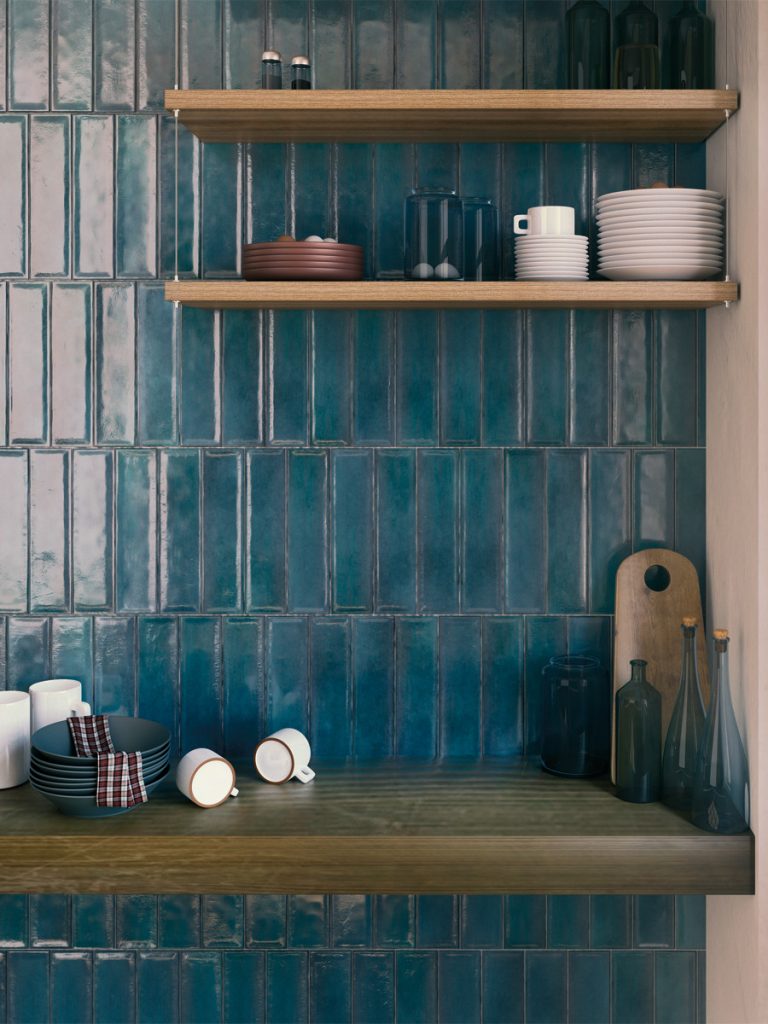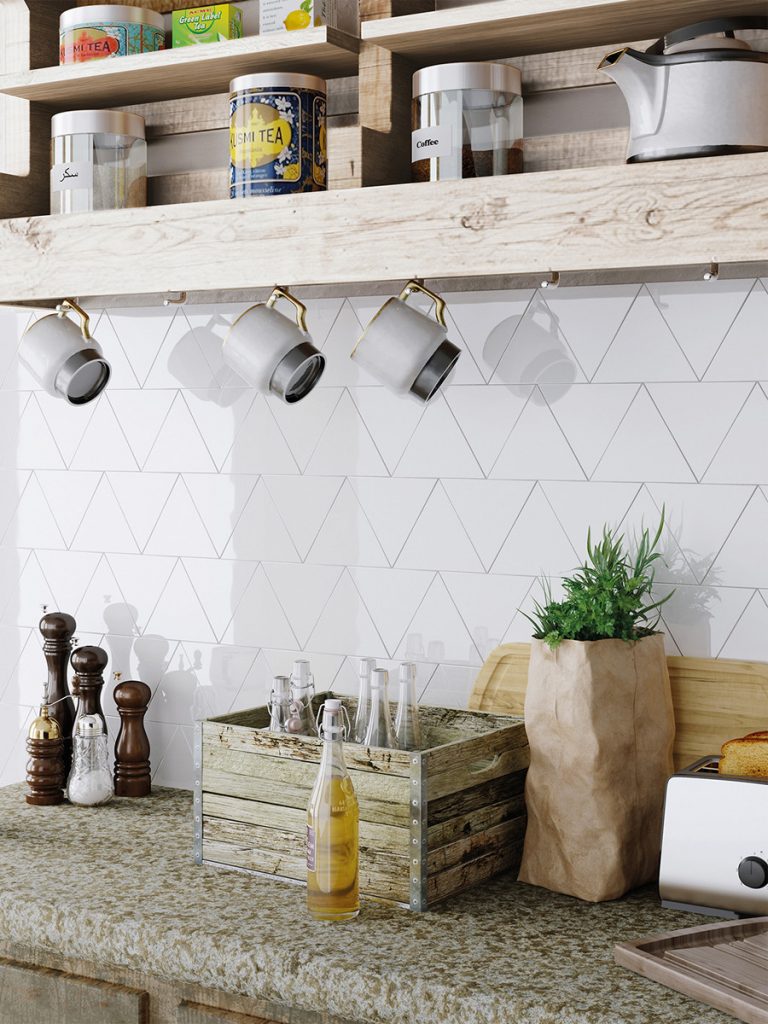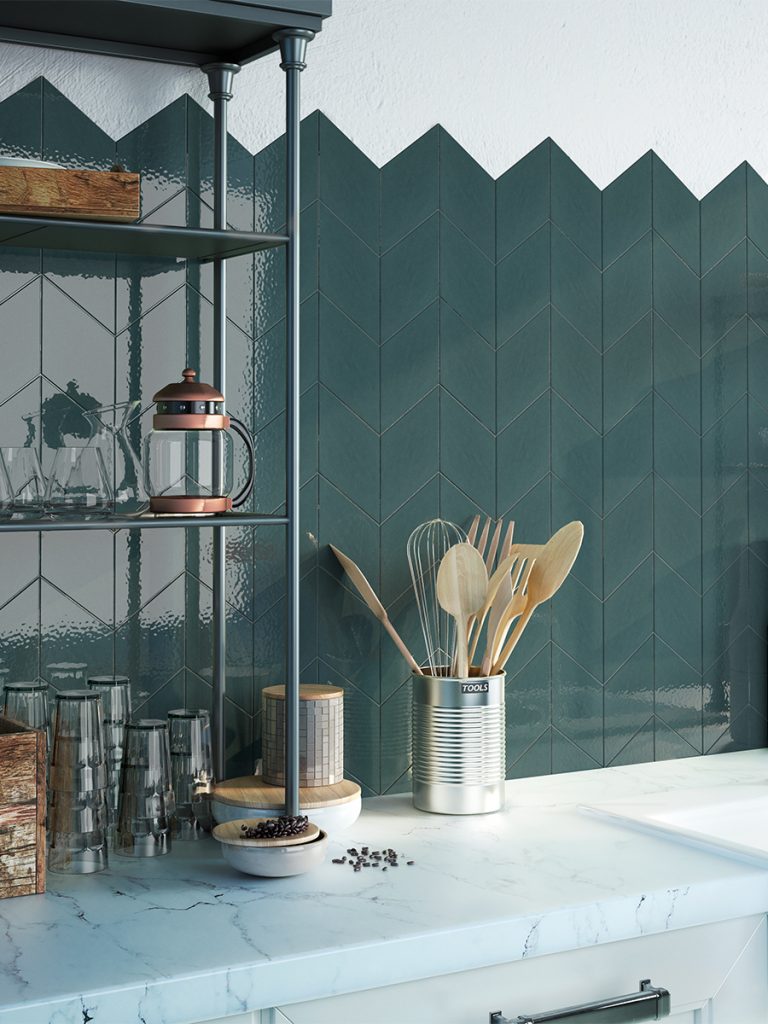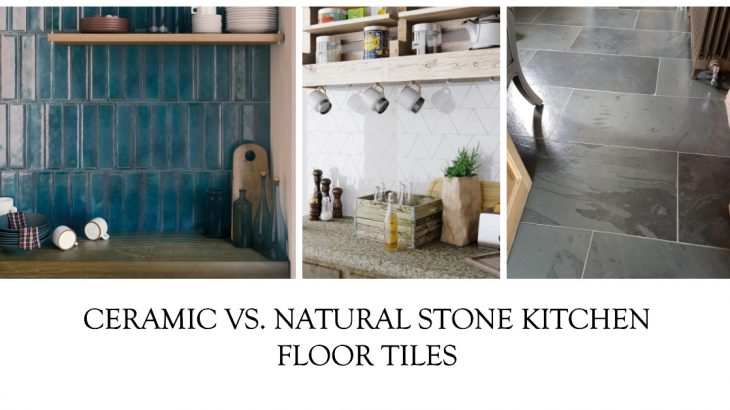The choice of kitchen floor tiles is a crucial decision for homeowners. The kitchen is not just a functional space; it’s also the heart of the home, where family and friends often gather. Therefore, the flooring needs to be both aesthetically pleasing and practical. In this blog post, we’ll delve into the comparison between two popular choices for kitchen floors: ceramic tiles and natural stone tiles. Let’s delve into the distinctions in terms of expenses, upkeep demands, and visual allure, empowering you to make a well-informed choice tailored to your specific requirements and tastes.
About Ceramic Tiles
Ceramic tiles are a common and versatile choice for kitchen flooring. While they come with a diverse array of advantages, there are also certain drawbacks to consider.


Advantages of Ceramic Tiles
- Cost-Effectiveness: One of the most significant advantages of ceramic tiles is their affordability. Their typically more pocket-friendly price tags make them an appealing selection for homeowners seeking budget-friendly options.
- Variety of Styles and Designs: Ceramic tiles come in an extensive array of styles, colors, and patterns. This variety allows you to find the perfect tile to match your kitchen’s aesthetic and design preferences.
- Durability and Resistance: Ceramic tiles are known for their durability and resistance to stains and water. They can withstand heavy foot traffic and are less likely to chip or crack compared to natural stone.
Disadvantages of Ceramic Tiles
- Less Natural Appearance: While ceramic tiles offer a wide range of design options, they lack the natural appearance and unique patterns found in natural stone tiles. Some homeowners prefer the authentic look of natural materials.
- Susceptibility to Cracks: Although ceramic tiles are durable, they can still crack if subjected to heavy impacts. It may require occasional repairs or replacements.
About Natural Stone Tiles
Natural stone tiles, on the other hand, provide a distinct and timeless beauty to kitchen floors but also have their own set of characteristics.
Advantages of Natural Stone Tiles
- Timeless and Unique Appearance: Natural stone tiles offer a timeless and elegant appearance. Each tile is unique, showcasing the natural patterns and textures of the stone. This uniqueness adds character to your kitchen floor tiles.
- Longevity and Durability: Natural stone tiles are known for their longevity. With proper maintenance, these stones can stand the test of time, their allure maturing gracefully over the years.
- Potential Increase in Home Value: Installing natural stone tiles can potentially increase the value of your home, making it an attractive option for those considering resale.


Disadvantages of Natural Stone Tiles
- Higher Initial Cost: The primary drawback of natural stone tiles is their higher initial cost compared to ceramic tiles. They are an investment, and homeowners should be prepared for the upfront expense.
- Maintenance Requirements: Natural stone tiles require more maintenance than ceramic tiles. It includes regular sealing to prevent staining and resealing over time. Additionally, you’ll need to be cautious about preventing acidic substances from damaging the surface.
Cost Comparison
When it comes to cost, ceramic tiles are the more budget-friendly option. They are not only cheaper per square foot but also easier to install, which can further reduce labor costs. For homeowners with limited budgets, ceramic tiles provide an attractive solution that doesn’t compromise on quality.
Natural stone tiles, while pricier upfront, offer long-term value. Their durability and timeless appeal can justify the initial investment. However, it’s essential to consider your budget and long-term financial goals when making your decision.
Maintenance Comparison
Maintenance requirements are another critical factor to consider when choosing between ceramic and natural stone tiles.
Ceramic Tiles:
- Cleaning and Sealing: Ceramic tiles are relatively low maintenance. Regular cleaning with mild detergents is usually sufficient. They do not require sealing, which reduces long-term maintenance needs.
- Repairs and Replacements: While durable, ceramic tiles can crack or chip over time. Fortunately, replacing a single damaged tile is relatively straightforward and cost-effective.
Natural Stone Tiles:
- Sealing and Resealing: Natural stone tiles require sealing upon installation and periodic resealing to protect against stains. The frequency of resealing depends on the type of stone and usage.
- Stain Prevention: Preventing stains from acidic substances (like citrus juices) is crucial to maintaining the stone’s appearance. Promptly clean spills to avoid staining.

The choice between ceramic and natural stone tiles in terms of maintenance often comes down to your willingness to invest time and effort. If you prefer low-maintenance flooring, ceramic tiles are a more forgiving option. However, if you’re willing to put in the effort to maintain the natural beauty of stone, the results can be stunning.
Aesthetic Appeal
Aesthetic preferences play a significant role in the decision-making process for kitchen floor tiles.
Ceramic Tiles:
- Versatility in Design Options: Ceramic tiles offer immense versatility. You can find ceramic tiles that mimic the look of natural stone, wood, or even concrete. This adaptability allows you to create various design styles, from contemporary to traditional.
- Contemporary and Modern Aesthetics: Ceramic tiles find favor in modern and contemporary kitchen designs, owing to their crisp lines and an extensive selection of elegant finishes.


Natural Stone Tiles:
- Unique Natural Patterns and Textures: The standout feature of natural stone tiles is their unique patterns and textures. No two natural stone tiles are alike, creating a one-of-a-kind look in your kitchen.
- Timeless and Classic Aesthetics: Natural stone tiles exude a classic and timeless elegance that can complement both traditional and modern kitchen designs.
Ultimately, the decision between ceramic and natural stone tiles hinges on your individual preferences and the overarching aesthetic you aim to create within your kitchen space. If you seek a more modern or contemporary look, ceramic tiles offer a broader range of options. On the other hand, if you prefer a timeless and authentic appearance, natural stone tiles are the ideal choice.
In conclusion, the choice between ceramic and natural stone kitchen floor tiles comes down to a combination of factors: cost, maintenance requirements, and aesthetic preferences. Ceramic tiles offer cost-effective versatility and low maintenance, making them a practical choice for many homeowners. Natural stone tiles, while more expensive and demanding in terms of maintenance, provide a timeless and unique beauty that can enhance the value of your home.
Ultimately, the right choice depends on your priorities, budget, and the overall style you want to achieve in your kitchen. By considering these factors carefully, you can make an informed decision that ensures your kitchen floor is both functional and visually appealing, enhancing the overall ambience of your home.
